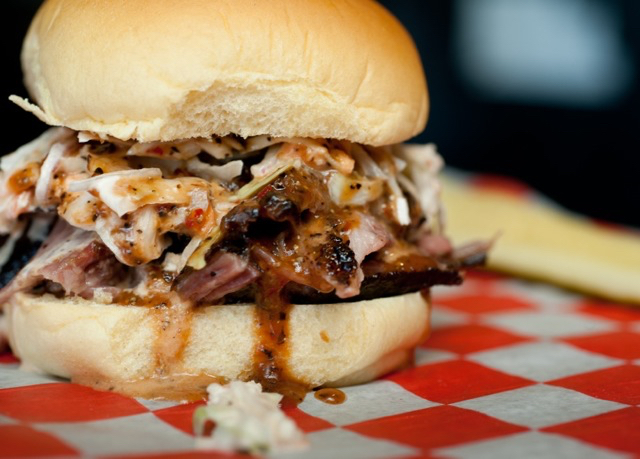
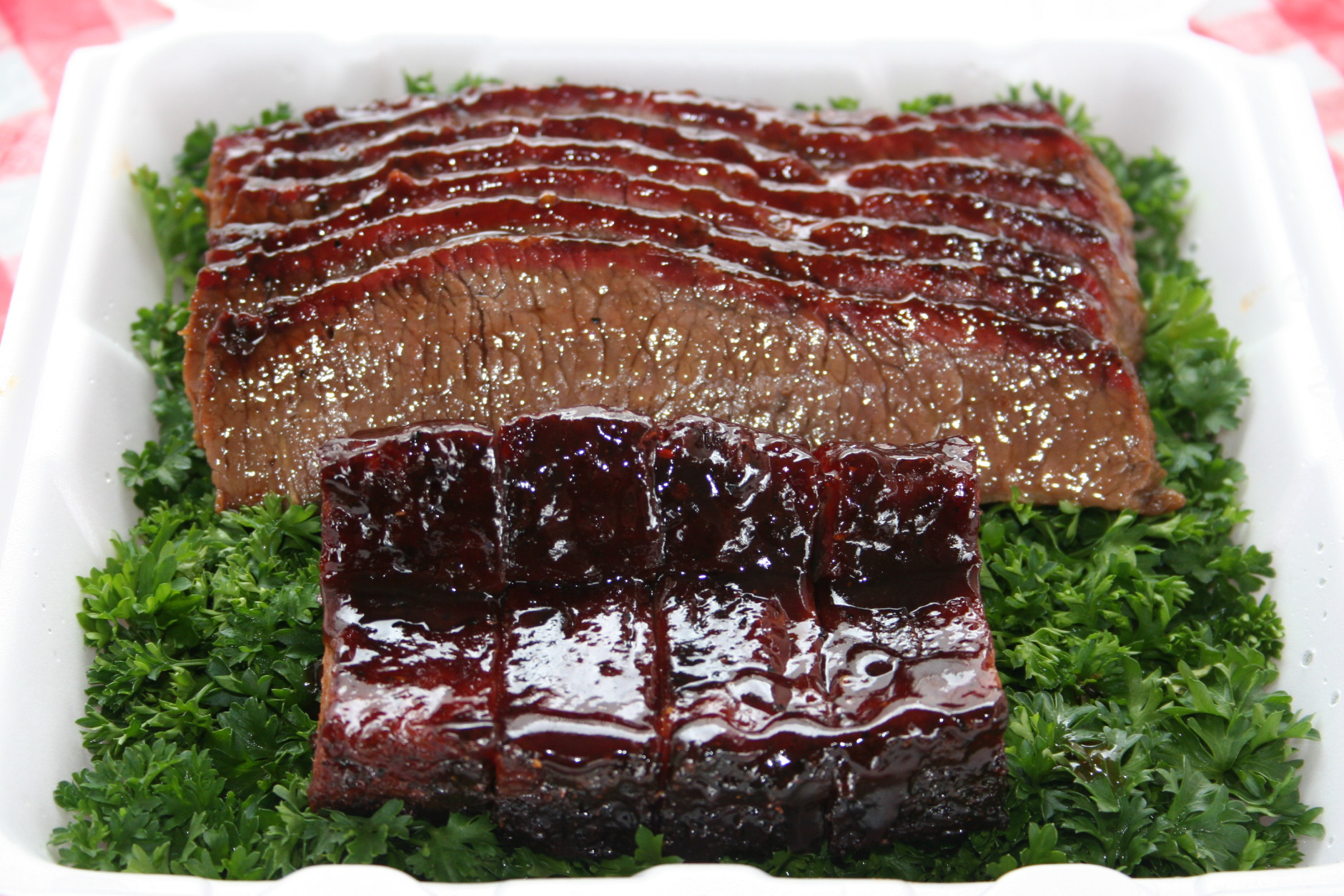
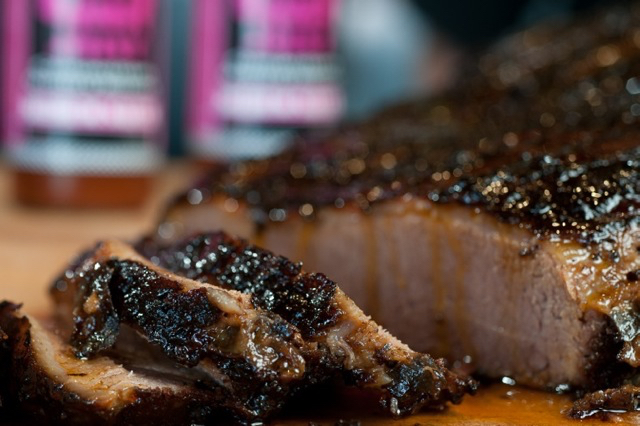
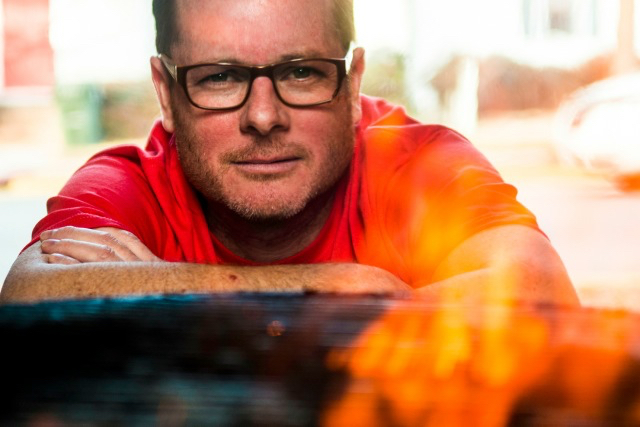
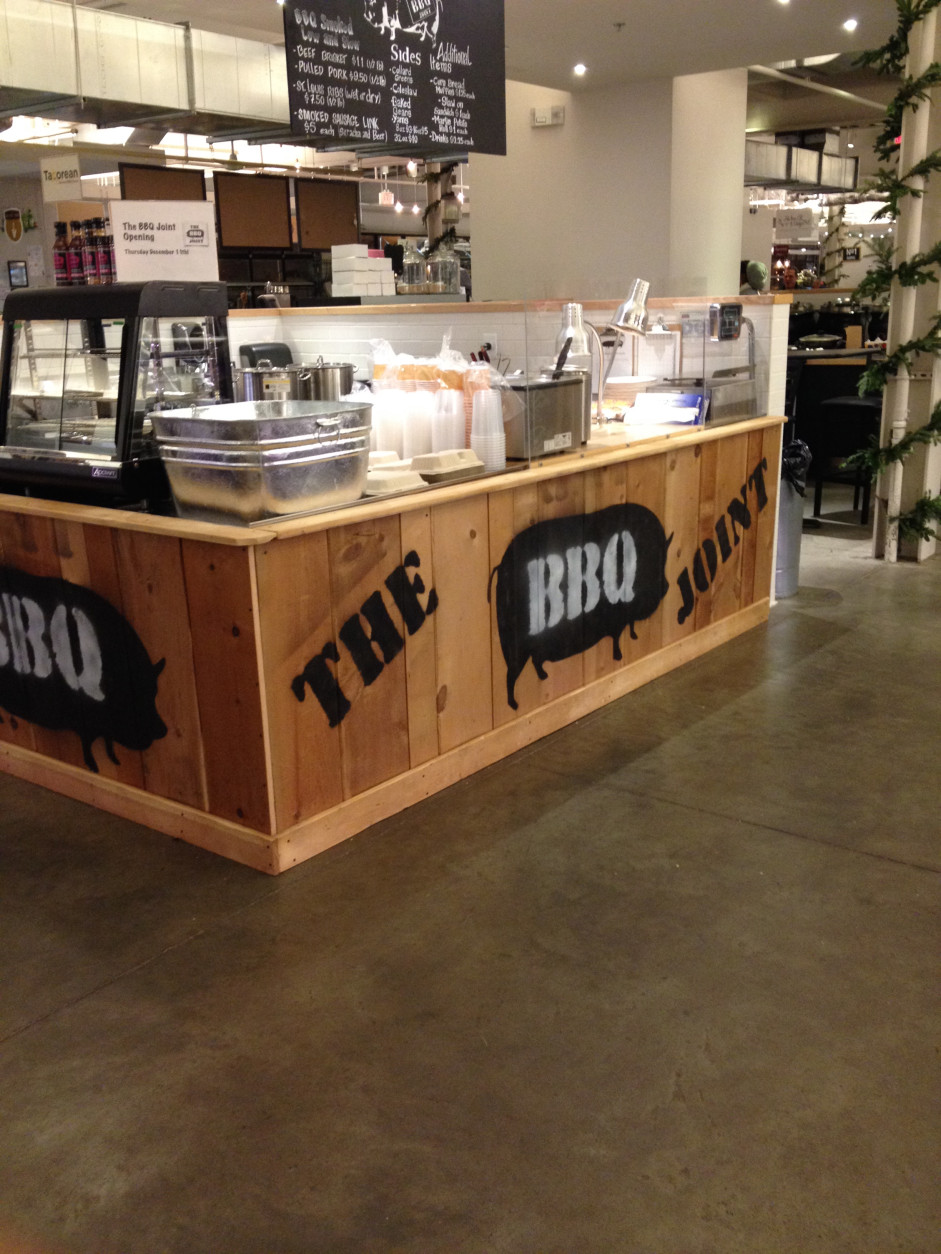
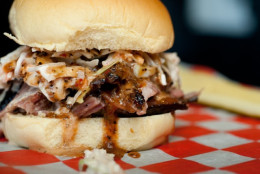
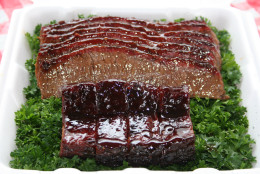
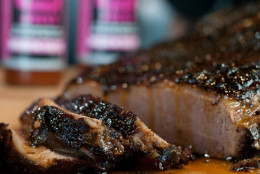
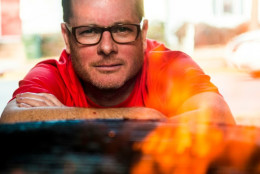
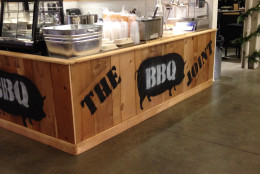
WASHINGTON — Eleven years ago, Chef Andrew Evans says he never gave much thought to barbecue. In fact, he describes his encounters with the culinary category up until then as “ehh.”
But that all changed when Evans — the former chef and owner of the Inn at Easton, a three-star fine dining establishment that closed in 2007 — was invited to be a guest judge at the 2004 Jack Daniels World Championship Barbecue Competition.
“I’ve only had about five eating moments where I got goose bumps and that was one of them,” Evans says about the barbecue he tasted at that event. “I had that moment — you know, that ‘Oh my God this is insane and I want to learn how to cook this’ moment.”
And that is exactly what he set out to do. Evans returned to his home in Easton, Maryland, and started a long, self-taught journey toward making delicious barbecue — a journey that required research, trial and error and a lot of friends to taste his creations.
“No one will tell you how to do it. It just takes a lot of bad barbecue,” Evans says. “Once you figure it out, though, you can consistently make a great product.”
It took Evans about five years before he felt like he had a recipe and technique that he was willing to share with others. In 2010, he traded his barbecue judge’s hat in for a chef’s hat and began competing on the Kansas City Barbecue Society (KCBS) circuit. At that same time, he also opened The BBQ Joint, in Easton.
Now, Evans runs three BBQ Joints, including a storefront in Pasadena, Maryland, and his most recent, at Union Market in Northeast D.C., which he opened in December. There, he sells everything from ribs, to brisket, pork and sausage — plus all the sides.
Evans has some words of wisdom for those hoping to unlock the secret of making good barbecue. He says there’s no one key ingredient, recipe or method. It’s a process that’s dependent on many variables — a process he likens to making wine.
“Wine is inherently very simple; it’s grapes, smashed and fermented and then you have wine, right? And you can add certain things, like sugars; you can also add yeast, to achieve different effects. … Well, obviously, it’s a lot more complicated than that.”
He says, similar to wine, the weather, the growing season and the additives or seasonings can all affect the final taste of barbecue.
“We’ve got a fire with smoke, meat, seasoning — so how hard is that? But it’s the infinite amount of variables, and the same with the wine. What kind of meat is it? Just like the grape, what was the growing season like? So there are some funny parallels, and I think that’s why people are obsessed with wine. They’re chasing all of these little, minute variables, and when you dial them in, you don’t have to be a wine connoisseur or a sommelier to understand what wine is good, what’s perfectly balanced. Barbecue can be the same way; you just know intuitively. I call it ‘plucking the primal chord.’”
However, he says starting with a high-quality meat certainly helps. And he advises not to skimp on the fat when picking out the protein.
“To make great barbecue, you have to have great product. You cannot turn just anything into great barbecue,” Evans says.
For example, when it comes to ribs, Evans says to look for meat that is “like a candy stripe.” The white, fatty part of the meat should alternate in a regular pattern with the lean meat. When it’s cooking, the fat will render down and flavor the ribs.
After selecting the best product, Evans moves on to the brine and the seasoning.
“The ribs get treated through a system in my kitchen before they actually hit the smoker.”
When asked to define his style of barbecue, Evans deflects. He says he doesn’t want to get pigeonholed into any of them — North Carolina, Kansas City, etc. “I’m married to good flavor, so that’s what I’m chasing,” he says.
If the weekend lunchtime line at The BBQ Joint at Union Market is any indication of how Evans’ foray into D.C. dining is doing, it’s going well. He smokes all of his meat at the Pasadena location, so once he’s out of what he brought, there’s no more. And, he says, he sells out of barbecue about half the time.
There is no set menu for The BBQ Joint at Union Market. Customers can order anywhere from one or two ribs, just for a taste, or a sandwich and platter of sides. There are also large plate sharing options for family-style dining, and Evans takes large orders with a day or two of advance notice.
Eventually, Evans says he’d like to open a brick-and-mortar location in the District.
“It’s such a great food city,” he says. “Everyone’s so interested in food and interested in how it’s done. There’s just a real passion for it in D.C.”
Want to try your own hand at perfecting barbecue? Get ready for some time and effort, and get ready to spend some money at the butcher, Evans says. But his best piece of advice is to practice and take notes — he has notebooks full of his own records.
“Once you figure it out, though, you can consistently make a great product,” he says. “Barbecue can either be the easiest thing in the world or the hardest thing in the world.”
—
Recipe: Andrew Evans’ Applewood Smoked Chicken Wings with a Bourbon Glaze and Buttermilk Ranch Dressing
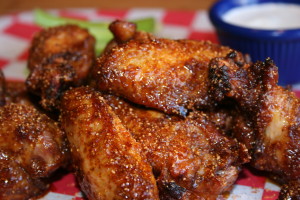
Ingredients
- 1 cup of applewood chips
- Small disposable aluminum pan
- Lump charcoal
- Weber grill or similar
- 12 chicken wings, tips removed and split in two parts (should have 24 pieces)
- 1/4 cup barbecue seasoning rub plus another 1/4 cup, recipe follows
- 1/3 cup bourbon
- 1/4 cup unsalted butter
- 3 celery stalks cut into thin 3-inch-long strips
- Ranch dressing for dipping, recipe follow
Method:
Build a lump charcoal fire to half a side of your grill. Next to the charcoal, position an aluminum pan filled one-third of the way with water. The bottom of your grill should be divided between lit charcoal and your water pan. Let the charcoal catch and burn for 20 minutes or so, then close the lid. You want a 275-degree cooking temperature.
Meanwhile, toss the wings to coat with 1/4 cup of the rub and lay on the grill grate over the water bath. Add apple chips to the coals, close the lid and drink a beer. You are now officially a barbecue pitmaster of the wings.
Maintain 275-degree temperature by adjusting the valves of grill. More air means a hotter fire. Wait 45 minutes, then lift lid and probe wings with thermometer. You want the temp to be at 175 degrees. Close lid and check every 15 minutes while maintaining temperature until wings are at 175 degrees.
In the meantime, reduce bourbon in a small pot by half, whisk in butter and set aside. When the wings are done, toss to coat in a bowl with bourbon butter, then sprinkle the remaining rub until it’s well coated. Serve immediately with ranch dressing and celery sticks.
BBQ Rub
- 1/3 cup brown sugar
- 1 tbsp. kosher salt
- 1 tbsp. paprika
- 1 tsp. ground black pepper
- 1/2 tsp. ground cayenne pepper
- 1/2 tsp. celery salt
- 1/2 tsp. ground cumin
- 1/2 tsp. garlic powder
Method:
Combine all spices in a food processor and pulse to combine. Sift through a medium strainer and store in an air tight container.
Ranch Dressing:
- 1 clove garlic minced
- 1/4 tsp. kosher salt
- 1 cup American-style mayonnaise
- 1/2 cup sour cream
- 1/4 cup Italian flat leafed parsley, minced
- 2 tbsp. fresh dill, minced
- 1 tbsp. fresh chives, minced
- 1 tsp. Worcestershire sauce
- 1/2 tsp. ground black pepper
- 1/2 tsp. white vinegar
- 1/4 tsp. paprika
- 1/8 tsp. cayenne pepper
- Dash of Hot Sauce like Tabasco
- 1/2 cup buttermilk
Method:
Whisk to combine all ingredients and let flavors develop, preferably the night before.







